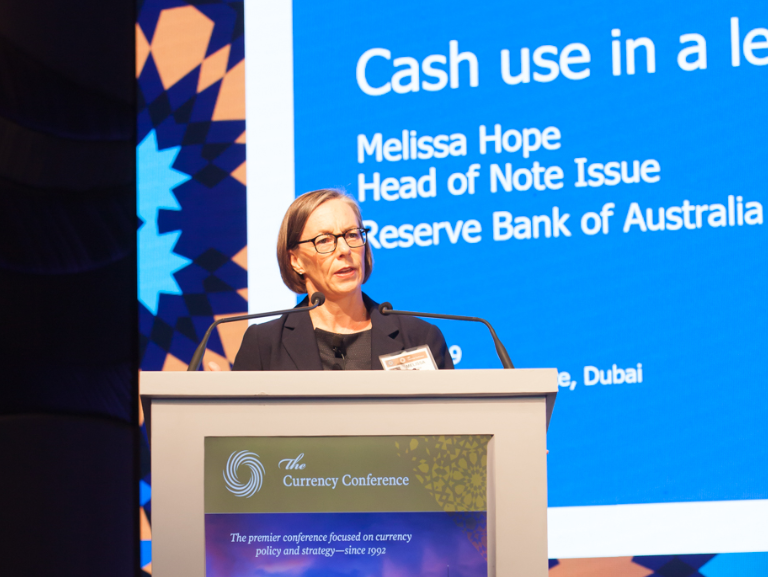While garnering respect for its leadership of the Australian economy amongst central banks across the world, the Reserve Bank of Australia demonstrated its leadership in the currency industry by delivering two presentations that made strong statements about its views on the future of cash. The presentations were delivered in April at Currency Conference 2019 in Dubai.
The RBA’s Head of Note Issue, Melissa Hope spoke on the topic of Cash Use in a Less-Cash Future citing statistics that show while the value of notes in circulation continues to increase, the use of cash in transactions is in decline as a percentage of total transactional value. While this phenomenon is being seen worldwide, and was reported in other presentations during the conference, the RBA distinguished itself by discussing the strategic approach it is taking to the issue and made clear that it is approaching this future in close cooperation with Note Printing Australia.
“Given that the NGB program has been so absorbing of our efforts for such an extended period, the issue that the Bank and NPA has been facing is: how do we best manage our relationship post NGB and in a world where the future of cash is evolving” said Melissa. “With the joint strategy work we have done over the past six months, we are collectively confident that it puts our relationship on a stronger footing and will enable us to meet our common objective of producing high-quality and secure banknotes that are cost effective for the Australian public.”
It is worth noting that throughout the conference, no other central bank made reference to its state printworks as a strategic partner in managing the future banknote environment.
Later in the day, Assistant Governor Lindsay Boulton addressed the subject of Central Bank Digital Currency. Presenting evidence to support the Bank’s position, Lindsay stated that there was no business case or public policy argument for the Bank to introduce a digital currency.
With 97% of money already in digital/electronic form, and with a payment infrastructure already in place to enable innovation (through the introduction of the New Payments Platform or NPP), the Bank is of the opinion that the Australian payments landscape is more than adequate to cover the needs of the market.
“Commercial banks could issue digital currency tokens but don’t because there’s no advantage to do so,” said Lindsay.
In reference to a situation of financial stress he continued that a “Central Bank Digital Currency could actually compound the stress by make it quicker for people to withdraw their money from the banking system. One of the key roles of a central bank is to maintain financial stability in the system which means keeping liquidity (money) in financial markets.”
As opposed to the Swedish Riksbank’s opinion that currency and digital currency are twins, Lindsay expressed the view that the introduction of digital currency may in fact hasten the demise of cash. This would be unfortunate, he said, because there are some features of physical cash that cannot be replicated by a digital alternative.

